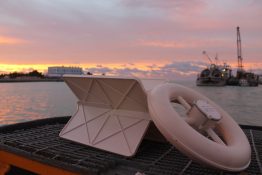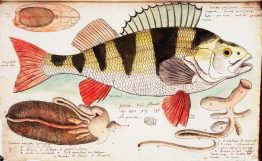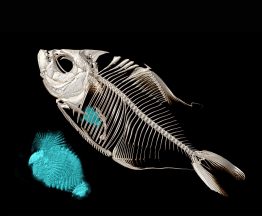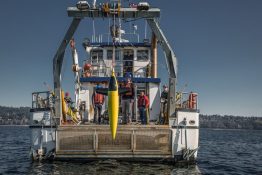An experiment featuring the largest flotilla of sensors ever deployed in a single area provides new insights into how marine debris, or flotsam, moves on the surface of the ocean. Conducted in the Gulf of Mexico near the site of the Deepwater Horizon oil spill, the experiment placed hundreds of drifting sensors to observe how material moves on the ocean’s surface.
Read more at UW Today »Q&A: Forgotten fish illustrator remembered through first publication
More than three centuries ago, a French monk made thousands of drawings of plants and animals, traveling under the authority of King Louis XIV to the French Antilles to collect and document the natural history of the islands. These drawings were often the first ever recorded for each species and were completed in remarkable detail. The illustrations were nearly lost forever during the tumultuous French Revolution, and the volumes compiled by Father Charles Plumier were discovered by chance, found serving as stools for the monks to sit on by the fire in the convent where he lived.
Read the Q&A at UW Today »Scale-eating fish adopt clever parasitic methods to survive
A small group of fishes — possibly the world’s cleverest carnivorous grazers — feeds on the scales of other fish in the tropics. The different species’ approach differs: some ram their blunt noses into the sides of other fish to prey upon sloughed-off scales, while others open their jaws to gargantuan widths to pry scales off with their teeth. A team led by biologists at the University of Washington’s Friday Harbor Laboratories is trying to understand these scale-feeding fish and how this odd diet influences their body evolution and behavior.
Read more at UW Today »Partnership will use robotic network to explore Antarctic ice shelves
One of the biggest unknowns for the future of Earth’s climate is Antarctica, where the West Antarctic Ice Sheet holds so much ice that, if it collapsed, it could bring several feet of rising seas. A new partnership between the University of Washington’s College of the Environment, the UW Applied Physics Laboratory and Paul G. Allen Philanthropies will use a robotic network to observe the conditions beneath a floating Antarctic ice shelf.
Read more at UW Today »Loose skin and slime protect hagfishes from sharks
Researchers from the University of Washington, Chapman University and University of Guelph have published new research showing how hagfishes — an ancient group of eel-like animals found at the bottom of the ocean — survive an initial attack from predators before they release large volumes of slime to defend themselves. Results show that hagfish skin is not puncture resistant; instead, it is both unattached and flaccid, which helps avoid internal damage from penetrating teeth.
Read more at UW Today »





